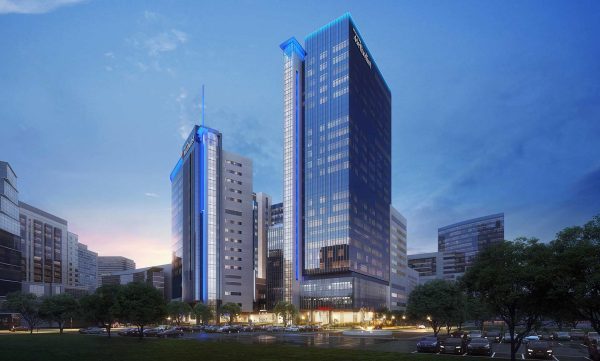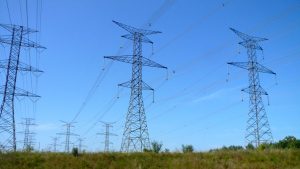Centennial Tower at the Houston Methodist Hospital is projected to open in 2027, maintaining the facility’s status as one of the most respected medical complexes in the United States.
In 2024, the hospital was named to U.S. News & World Report’s Honor Roll of best hospitals in the country for the eighth time and is currently ranked number one in Texas.
The 1.33-million-square-foot 26-storey tower will house nearly 400 patient beds, many relocated from Houston Methodist’s main building. The emergency department will also double in size, with enhanced imaging services, 54 added beds and additional suites. The total cost is estimated to be $1.4 billion.
Centennial Tower will connect to the nearby Paula and Joseph C. “Rusty” Walter III Tower via a series of vertically stacked connector bridges at levels nine to 21. An outdoor rooftop garden at the 14th level, complete with trees and landscaping, will provide patients, visitors and staff with an outdoor area for respite.
Beyond the significant size of this addition are the efforts to minimize the carbons associated with its construction. Low carbon concrete is a main feature. A total of more than 15,000 m3 (20,000 cubic yards) of Cemex’s low-carbon Vertua concrete will be used.

Cemex was founded in Mexico in 1906 and has grown into a leading building solutions company. Today the company has a U.S. network that includes nearly 50 aggregate quarries, more than 280 ready-mix concrete plants and 10 cement plants close to 50 strategically-located cement terminals.
The build faced logistical challenges. These were resolved through collaboration between Vaughan Construction and Cemex.
It was important that the tower’s massive foundation in the middle of the busy medical centre take place without interrupting surrounding emergency services. Cemex was able to pour around 8,400 m3 (11,000 cubic yards) of Vertua concrete both safely and continuously for 20 continuous hours without affecting access to the medical centre.
Cemex says Vertua is part of its Future in Action program, a key part of the firm’s commitment to reduce carbon emissions per ton of cementitious material by 47 per cent and in concrete by 41 per cent by 2030 and ultimately reach net-zero carbon emissions across its value chain by 2050. Cemex says Vertua products can reduce carbon emissions by more than 30 per cent while maintaining strength and durability, making it a great sustainable alternative for all applications where conventional concrete is used.
“Vertua is a portfolio of products and solutions with a range of sustainable attributes that contributes towards building a better future, a future that is carbon neutral, sustainable and circular,” the company says.
All Vertua products have third-party certified Environmental Product Declarations. Cemex was recognized for Sustained Excellence in Energy Management by the U.S. Environmental Protection Agency by naming the company a 2024 ENERGY STAR® Partner of the Year for the sixth consecutive year.
Some of the company’s carbon-reduction achievements include: sourcing 100 per cent renewable electricity at a cement plant; launching more than 30 thermal and electrical efficiency upgrade projects; replacing dozens of ready-mix trucks and transport tractors with low emission, compressed natural gas vehicles; and replacing three diesel-powered locomotives with near-zero emissions locomotives.
Jaime Muguiro, president of Cemex USA, says improving lives, particularly in areas of health services, is a key corporate objective.
“Not only are we providing expert logistics and resilient materials, but we are also providing an alternative to lower the carbon footprint of the project with our more sustainable solutions.”
Worldwide cement production was responsible for about 8.0 per cent of global carbon emissions in 2022, according to the World Economic Forum, a slight reduction from the previous year.
However, the organization says, “the current trajectory would see emissions from the sector soar.”
Innovations like Vertua can make a difference.
“There’s no silver bullet to get to zero carbon,” but rather a combination of strategies “to get pretty darn near,” says Lionel Lemay, National Ready Mixed Concrete Association’s executive VP for structures and sustainability.
John Bleasby is a freelance writer. Send comments and Climate and Construction column ideas to editor@dailycommercialnews.com.












Recent Comments